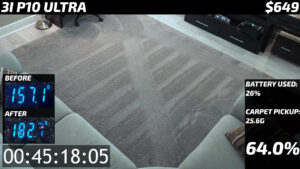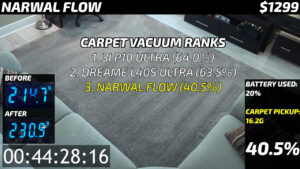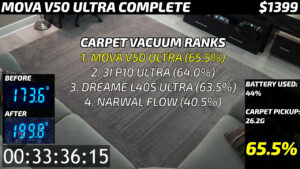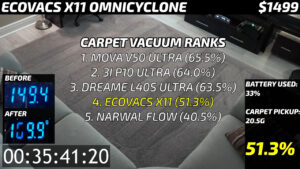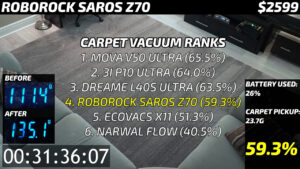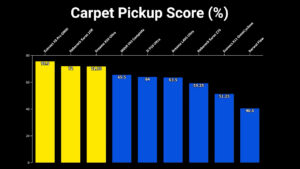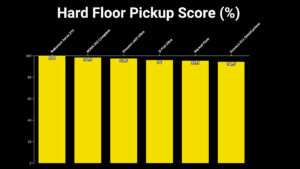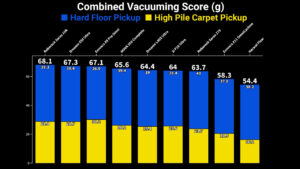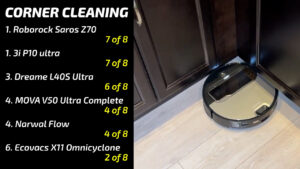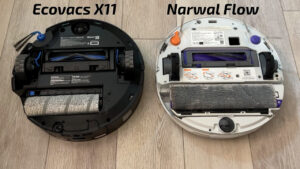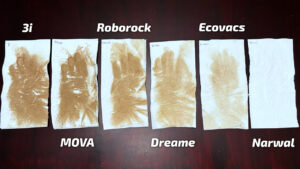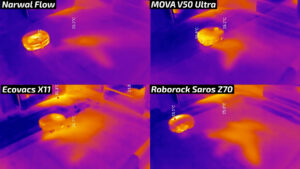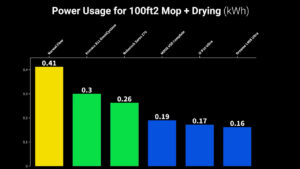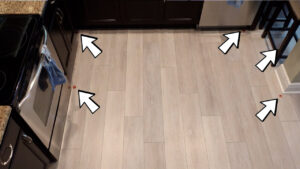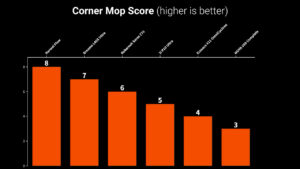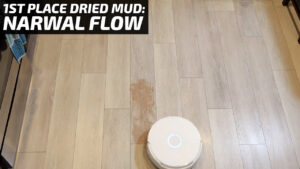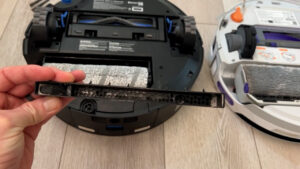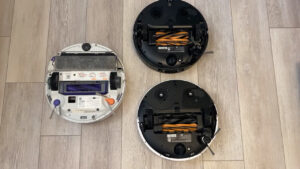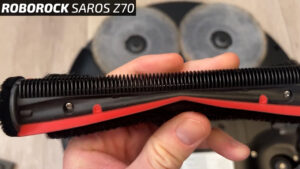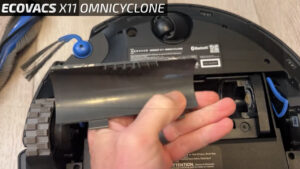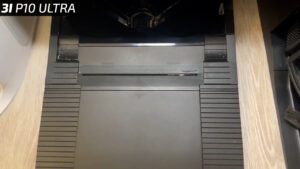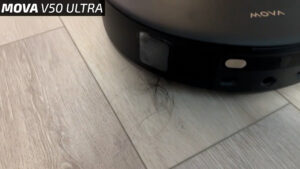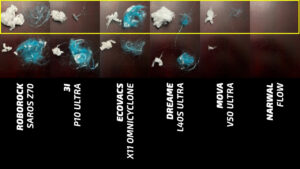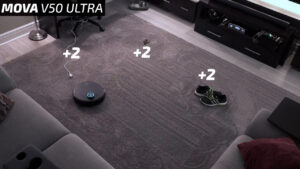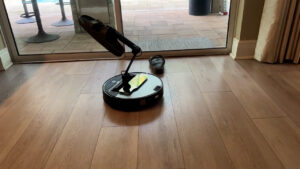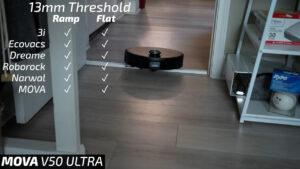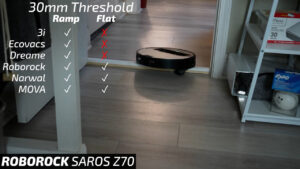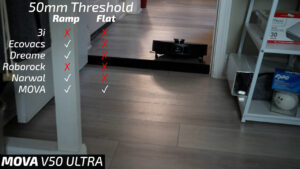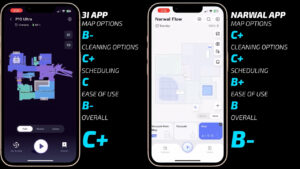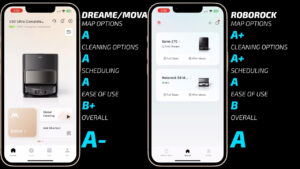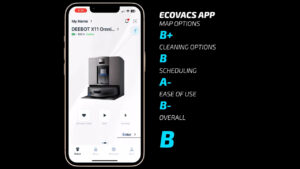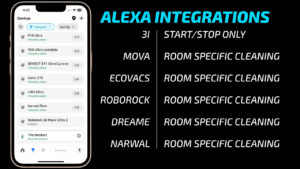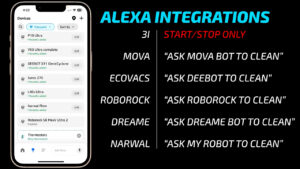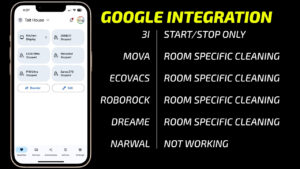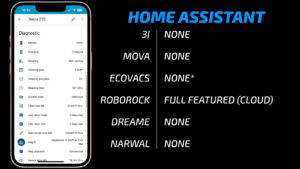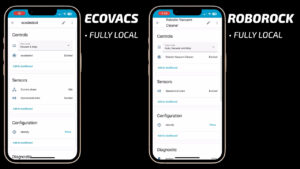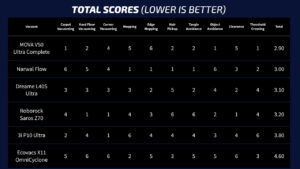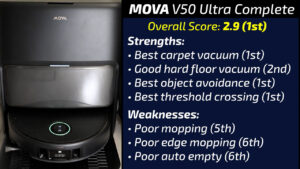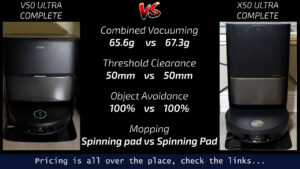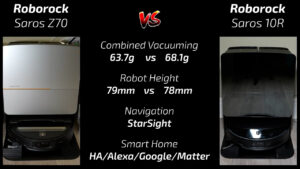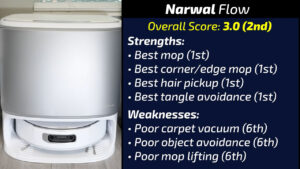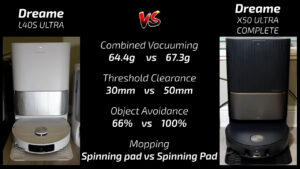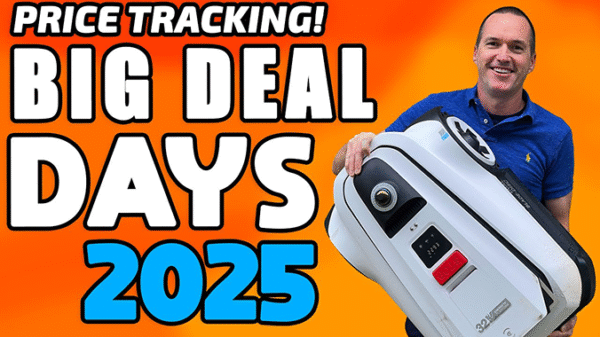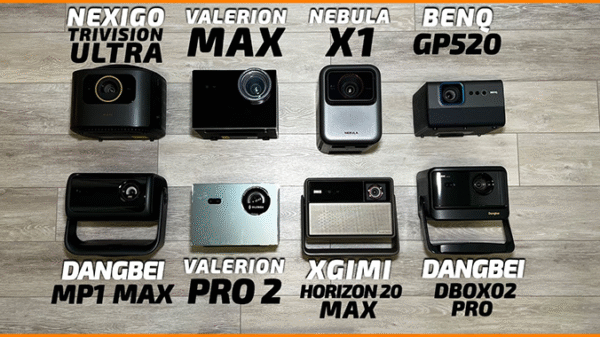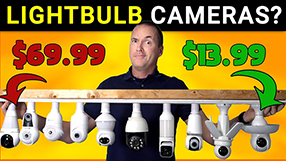Mid 2025 Ultimate Robot Vacuum and Mop Comparison
September 11, 2025It has been six months since my last robotic vacuum review, and it seems like these companies are releasing new models with flagship features every month. In this video I’ve got six new top of the line models from Roborock, Narwal, Dreame, Mova, Ecovacs, and 3i and we’re going to see if any of them are better than the overall winners from February, which were the Roborock Saros 10R and the Dreame X50 Ultra. As always, there are no sponsored reviews on this channel.
First, we’ll test their vacuuming performance on carpet and hard flooring. Then we’ll test how well their mops work in different situations. After that we’ll see how well they deal with pet hair and long human hair. We’ll test their object recognition, mapping, and ability to clean in ways that previous generations of robotic vacuums couldn’t. Lastly, we’ll evaluate their specific apps, smart home integrations, and privacy features.
To test vacuuming performance, I prepared a mixture of 10 grams each of rice, flax seed husks, salt, and flour to simulate different sized dirt and dust and ran each vacuum on their maximum suction power using vacuum only and a two-pass cleaning. I weighed the dustbins before and after each cleaning task, and then again after the auto dustbin emptying process and I thoroughly vacuumed with a corded upright between tests.
We’ll start with the least expensive vacuum in this video, the $649 3i P10 Ultra. 3i released their super unique S10 flagship in 2024 that could pull water from the air to refill its mopping tanks, but the P10 doesn’t have any of that. It’s just a normal vacuum and mop with a pretty standard set of features. In its 45-minute vacuuming run the 3i P10 used 26% of its battery and collected 25.6 grams, or 64% of the flour, salt, flax, and rice mixture. After the auto-empty process there was 1.1 gram left in the dustbin and the small air filter was almost completely clean.
After that is the $899 Dreame L40S Ultra which is considerably less expensive than their flagship X50 and has almost all the same features except the retractable LIDAR turret and 19,000 kPa of suction instead of 20,000. The L40S Ultra cleaned for 30 minutes and used 23% of its battery to pick up 25.4 grams or 63.5% of the debris mixture, half a percent less than the 3i putting it in second place. After the auto-empty process, the Dreame had 4.8 grams left in its dustbin that was mostly caked into the air filter.
Next for $1299 is the Narwal Flow, which is their highest suction vacuum ever at 22,000 kPa, but in its 44-minute vacuuming run on my high pile carpet the Narwal was only able to pick up 16.2 grams or 40.5% of the flour, salt, flax, and rice, but it did only use 20% of its battery. After the auto-empty process, the Narwal only had 0.6 grams left in its bin with a surprisingly clean filter indicating that its auto empty system is very effective and the vacuum should be less likely to lose suction over time.
After that for $1399 is the MOVA V50 Ultra Complete. MOVA is another newer company that debuted at CES 2025, but is definitely tied to Dreame, and you’ll see that they use a lot of the same technology and have a lot of shared features. The V50 advertises a massive 24,000 kPa of suction, which helped it pick up 26.2 grams or 65.5% of the debris mixture in its 33-minute vacuuming run, putting it in first place, but all that suction took a lot of power, using 44% of its battery. After the auto-empty process, the Mova still had a concerning 8.9 grams of debris left in its bin, which similar to the Dreame, was heavily caked into the air filter.
Next for $1499 is the brand new Ecovacs X11 OmniCyclone. I reviewed the X8 when it came out just six months ago and since then they’ve released the X9, skipped over X10, and are now on the X11. The X11 OmniCyclone has 19,500 kPa of suction which is 1500 more than the X8, but the X11 carpet test was fairly disastrous, first getting stuck by wedging itself under my couch, then telling me that it had completed its vacuuming task after only doing a perimeter clean, and then when I finally got it to do a full cleaning run it got stuck under the couch two more times. In the 36 minutes of cleaning the X11 OmniCyclone picked up just 20.5 grams, or 51.25% of the debris mixture, putting it in 2nd to last place in this group which is surprising since the X8 had the 2nd highest carpet score I’ve ever recorded. However, the new bagless auto empty system on the OmniCyclone was effective and the bin and filter were relatively clean with only 1 gram of left over flour dust.
Last, for a staggering $2599 is the most technologically advanced robot on the market that vacuums, mops, and picks up after you: the Roborock Saros Z70. The Z70’s 22,000 kPa of suction matches the lower priced Saros 10R, but the Z70 has a completely different brush roller system, using recessed razor blades to avoid hair tangles instead of the popular and effective duo divide brush system. In its 31-minute vacuuming run the Z70 picked up 23.7 grams or 59.25% of the flour, rice, salt, and flax mixture, putting it in 4th place. After the auto-empty process the Z70’s small dustbin still had 2.7 grams of debris in it, which was almost all caked into the air filter.
That means that the Mova V50 Complete had the best score for this set of vacuums at 65.5%, and the 3i P10 Ultra was close behind, but they were all significantly worse than the X8 Pro Omni, Saros 10R, and X50 Ultra from my February review.
Next, repeating the same vacuuming test on my LVP hard flooring, again with maximum suction, two pass, vacuum only mode, all of the vacuums performed significantly better, with the Roborock Saros Z70 recording a perfect 100% score, the Mova came in at 98.5%, the Dreame at 97.5%, the 3i at 96%, and the Narwal and Ecovacs filled out the bottom two positions with 95.5 and 94.5% respectively.
So that means for combined vacuuming performance the overall top performer was the Mova V50 Ultra Complete with 65.6g picked up, and the Dreame was in 2nd with 64.4g, but as I said, those still don’t come close to the Saros 10R, Dreame X50 Ultra, or Ecovacs X8 Pro Omni from earlier this year.
I also measured their corner brush performance by putting a teaspoon of dried breadcrumbs in four separate locations in my kitchen and sending out each vacuum on a single pass vacuuming run. To score them I gave the vacuums 2 points for cleaning up a pile completely and 1 point for a partial clean. These results were so strange because the top two scores were the Roborock and the 3i with 7 points each, meaning they completely cleaned all the piles except under the refrigerator, and the odd part is that the Dreame, Mova, and Roborock, all have fancy articulating side brushes specifically for reaching into corners, and the Narwal has a new hinged side brush that extends when spun in reverse to clean corners, but the 3i just has a fairly traditional side brush design and somehow still ended up tied for first place. Similarly odd, Ecovacs has switched to a front facing LIDAR system to avoid the top bump and be able to go under furniture, but it decided for some reason that it couldn’t fit under my stools and didn’t even attempt to clean that pile, even though it would have had plenty of clearance.
Lastly, for vacuuming, I measured the noise level at their highest suction power and here they are from quietest to loudest.
Moving on to mopping performance, I like to simulate a realistic test in my house which is when wet mud gets tracked in on shoes and feet and then dries on the floor. To simulate that, I spread 10 mL of Florida mud over a 2 ft by 2 ft square and dry it with a hair dryer. Each vacuum then gets set to maximum water flow and two passes on a combined mopping and vacuuming run. After each run, I spray the area with two sprays of water and wipe it clean with a paper towel, then set the paper towel aside to air dry. In between each test I mop the floor with a traditional wet mop and hand dry with a towel.
This year had a few anomalies. First, the MOVA V50 is the first robot I’ve ever seen decide that the mud was too messy and chose to avoid a large portion of it in its first run but didn’t do much better in its second attempt. The Ecovacs also had some similarly strange behavior, cleaning erratically in its first pass, but doing a completely normal second pass. In this group of robots there was only one standout mopping performance, which was from the Narwal Flow that not only has the new roller style mopping system with onboard clean and dirty water tanks, but it is also a double wide roller. It’s the first time I’ve ever had a completely clean paper towel test, and I was so impressed with it that I re-ran the test a second time to see if it could replicate those results and it was equally perfect.
The most surprising part about that is that all the other robots have automatic detergent dispensers that are supposed to help with tough stains, but the Narwal requires you to add the detergent directly to the clean water tank if you want to use it. For these tests I was just using plain water in the Narwal while the rest of the mops were using mopping solution.
A lot of these mops also make vague statements about mopping with warm or hot water, so I recorded each mopping session with a thermal camera, and while some of the robots themselves were clearly warmer than others there wasn’t any evidence that the floors were being mopped with significantly warmer water than room temperature.
They also use heated water to clean their mopping pads at the base and dry their mops with hot air, and all of that uses power. So, I measured the energy required for each Robot to mop 100 square feet, wash, and completely dry their mop. The Narwal used the most at 0.412 kWh, the Ecovacs and Roborock were around 0.3 kWh, and the rest were under 0.2 kWh per mopping run.
All of these robots also have the ability to extend their mops to clean under cabinets and close to the wall, so I tested those abilities by putting a smear of hot sauce in five separate locations in my kitchen and scoring each robot’s mopping performance by awarding 1 point for a partially cleaned spot and 2 points for a completely clean one.
Coming out on top, the Narwal Flow used its extra wide extending roller brush to carefully hug the corners and reach under the stool, completely cleaning three of the spots and mostly cleaning the other two. The Dreame also did well and is using a new corner cleaning algorithm that stops, rotates, and extends the mop for maximum coverage. The Roborock had decent coverage but struggled to absorb the hot sauce on its mopping pads and left a lot of streaks and smears. The 3i started out well but then failed to clean under the corner cabinet and also missed the outside corner by the stove. The Ecovacs just kind of looked like it was cleaning randomly and didn’t really make any effort to hug walls or corners. The MOVA had the worst corner mopping score with a combination of poor edge detection like the 3i and poor mop pad absorption like the Roborock.
For my last mopping test, I looked at whether the vacuums could mop and vacuum a room with both carpet and hard floors without getting the carpet wet, and I found that despite them being able to lift their mopping pads, the Mova, Narwal, and 3i all got my high pile carpet wet during a combined vacuum and mopping run. The Dreame and Roborock kept the carpet completely dry by recognizing that the room had both carpet and hard flooring and detaching their mopping pads at the station to vacuum the carpet first and then returned with mopping pads to clean the hard floor later. Oddly, the Mova also has the ability to leave its mopping pads at the station but isn’t programmed in the same way as the Dreame and Roborock and only detaches its mopping pads when doing a vacuum-only run, so it also got the carpet wet. The biggest surprise during this test was the Ecovacs, which doesn’t have detachable mopping pads, but somehow managed to mop the floor and then travel directly onto the carpet without getting it wet. So, I’m not sure if it can just lift the mopping pads that high or if it’s just scraping all the moisture out of the mop before vacuuming the carpet, but either way, it was pretty cool to see.
That means overall for mopping, the Narwal is in a league of its own with by far the best hard floor mopping performance and the best corner mopping with its main weakness being the inability to cross high pile carpet without getting it wet. While the Dreame L40S Ultra came in 2nd place with the best mopping of the spinning mopping pad robots and the 2nd best corner cleaning, it wasn’t even close to the performance of the Narwal Flow which is easily the best mopping robot I’ve ever tested.
However, while roller style mops like the Narwal Flow and Ecovacs X11 are significantly better at cleaning up big messes, they do require a bit more maintenance, specifically cleaning the onboard reservoir where it constantly scrapes dirty water off of the mop roller with every revolution. While you can get away with just throwing the spinning mopping pads in the washing machine, you’ll need to actually get in and brush out the reservoir on the roller mops about once a month to keep it draining well.
The other maintenance that you’ll need to do on each of these robots is filling their clean water tanks and emptying the dirty water. I ran a series of tests to see how much water is used in each cleaning, how often they wash their mops, and how much water they leave on the floor. Here are the numbers for a single 100 square feet cleaning, which represents the initial cleaning of the mop pads before the run, the water used to mop 100 square feet, and then the final mop pad cleaning done after the run.
Using that data, assuming that you were mopping a 1000 square feet area and each vacuum returned to wash its mopping pads after each 200 square feet, the Narwal would require the most attention and would need a refill every 2.3 mopping sessions while the Ecovacs could do a full 4 mopping sessions at 1000 square feet each before running out of water.
Another big problem that these vacuum brands have been trying to solve is hair pickup and tangle avoidance. In this group there are four different potential solutions. The Dreame, Mova, and Narwal are all using tapered brush rollers that are only connected to one side so any hair that wraps around the roller eventually travels down the brush and into the suction port. The Roborock is using recessed blades on two sides of the rollers that have the function of pulling in any tangled hair and cutting it in half so that it can be more easily collected in the bin. The Ecovacs is using a detangling comb combined with their anti-tangle brush roller. The 3i has a blade on the base that runs across the brush roller before the auto empty process to hopefully cut any tangled hair free. But the question is which of these solutions works best?
For the first test I started with a very realistic task of cleaning up 30 individual strands of real 12” human hair from my bathroom floor, and I sent each vacuum on a single pass vacuum only run and then to make sure they had sufficient time to detangle any hairs on their brush I also had them do a single pass clean of my family room carpet. Then after the auto-empty process I carefully inspected each robot for any hair tangles.
Most of the vacuums performed very well, with the Narwal coming in first with not a single piece of hair tangled anywhere on the robot. The Dreame and Roborock each had one stray piece of hair, each of them tangled in the wheel axel, the Ecovacs had two strands, also caught up in the wheels, the 3i had a bit more than that, all tangled on the brush roller itself, and the Mova was mostly tangle free, but had an issue with its auto empty system where clumps of hair would get caught on the back flap and dragged around until they fell off in random places in the house.
For the second test I was a bit less reasonable, and I spread 1 gram of synthetic 16” blue hair, and two cotton balls separated into tufts to simulate pet fluff on my high pile carpet and then ran each robot on a one-pass vacuum-only run. Afterwards I collected the uncleaned pet hair tufts and any leftover synthetic hairs on the carpet and inspected each robot for tangles and clogs.
As expected, this test was much more extreme. Starting with the leftover hair and fluff on the carpet, the Roborock basically didn’t clean any of the pet fluff and just matted it into the carpet, and there was also a significant amount of synthetic hair leftover. The Dreame also struggled to pick up the fluff on the carpet, but I think that was mostly because it saw them as obstacles and tried to avoid them. The 3i also had some erratic behavior around the fluff balls. The Ecovacs cleaned in a normal pattern but still left quite a bit of pet fluff and even more synthetic hair. The Mova did a very respectable job with just a couple of leftover pieces, but the Narwal did a truly awesome job and cleaned 100% of the hair and fluff on the floor.
Even more incredibly, the Narwal also managed to almost completely avoid any tangles, with just a single strand of blue synthetic hair stuck between the rubber and plastic on the wheel. As I said, it is an amazing performance on its own and the best that any robot has ever performed in this test, but it’s even more amazing considering how much hair and fluff was on some of the other vacuums and the tapered brushes seemed to be significantly more effective than any of the other methods of preventing hair tangles. The Roborock’s cutting brush was completely matted, the Ecovacs brush had a large tangle at the center of the roller, and the 3i’s hair cutting system wasn’t effective in this test and the brush roller was still completely tangled.
Here’s an overview of the amount of hair and fluff each robot left on the ground, and these piles represent what was tangled on the robot itself.
Twice now in this video, object avoidance has stopped these robots from cleaning my testing area completely, but now it’s time to see how well it works when it’s supposed to. I set up my living room with a pair of untied shoes, some rubber dog poop, and a loose extension cord and sent each vacuum on a one pass vacuum only run. To score their object avoidance, I gave them 2 points for avoiding an object and 1 point for moving it with no catastrophic outcomes like getting stuck or running over dog poop.
The only perfect score of 6 came from the Mova V50 which kept appropriate distances from each object, meaning cleaning right up against the extension cord and shoes, but keeping distance from the dog poop.
The 3i P10 Ultra earned 5 points avoiding the dog poop and shoes, but tangled itself on the cord, pulling it several feet before it could detangle itself.
The Roborock Saros Z70 also scored 5 points, again, avoiding the dog poop and shoes, but moving the extension cord several times.
The Ecovacs scored 4 points, successfully avoiding everything for the first part of its cleaning task and then running directly over the dog poop.
The Dreame knew it shouldn’t run directly over the poop, but got too close with its side brush, ultimately still scoring 4 points, but it would have been a total disaster.
Coming in last with just 3 points total the Narwal first got itself snagged on the cord and then completely disregarded the dog poop running over it multiple times and made no effort to avoid it.
Also, in this test we can see the main selling point of the Roborock Z70, which is the fact that it is the first robotic vacuum to have a 5-axis mechanical arm that can recognize and move objects out of the way to clean under them and identify and sort objects into different locations.
My impressions of the Z70’s arm are mixed. On the one hand, I love to see new innovation enabling these vacuums to become even more useful than they already are, but on the other hand the advertised use cases like picking up used tissues from the floor and throwing them away, and finding socks on the ground and sorting them into a separate bin really seem like personal hygiene problems that you shouldn’t need a state of the art robotic vacuum to solve.
The Saros Z70 seems like a huge amount of technology to counteract what could be pretty simple lifestyle changes. About the only real application I could see is if you had a dog that leaves a lot of stuffed toys around, the Saros Z70 could put them all away in some central location before cleaning, but if it’s your kids leaving toys around the Saros Z70 is less likely to be able to pick up non stuffed animal toys, and as a father myself, my personal opinion is that teaching your kids to put away their own toys is probably better than relying on a vacuum to do it.
That said, these vacuums do have a couple flagship features that are VERY useful for some houses, and the first is the ability to climb higher than normal thresholds between rooms. To test this, I built three different sized thresholds at 13 mm, 30 mm, and 50 mm, each with a ramped side and a flat side and marked the thresholds in each robot’s app. While all the vacuums ultimately crossed the small 13 mm threshold, the Narwal and especially the Dreame struggled quite a bit more than I was expecting on the flat side.
At 30 mm the Narwal Flow and Mova V50 crossed both the ramped side and the flat side with no issue, and the Roborock Saros Z70 eventually crossed the flat side after a bit of struggle, but the 3i, Dreame, and Ecovacs all failed to pass back over the 30 mm flat threshold.
At 50 mm the Narwal, Dreame, and Ecovacs were able to cross the ramped side but not the flat side, the Roborock and 3i weren’t able to cross in either direction, and the Mova V50 was the only robot that was able to cross in both directions using the same technique and hardware as the Dreame X50 Ultra from my last video. So, if you’ve got an abnormally large threshold in your house the Mova V50 or Dreame X50 Ultra are the most likely to be able to handle it.
The way that robots handle mapping and navigation is also evolving quite a bit. The Dreame and 3i are the only ones that still have a traditional top mounted LIDAR unit, which in theory should give the other robots a clearance advantage, but in reality the Dreame L40S has a total height of 95 mm including its LIDAR bump, while the Narwal flow is 95 mm without a LIDAR bump, and the Ecovacs X11 is 3 mm taller than that at 98 mm. Switching from 360 degree LIDAR to front or rear facing ultimately decreases mapping and navigation efficiency and also seems to affect the robot’s ability to tell which furniture it can and cannot fit under. Neither the MOVA nor Ecovacs decided they’d be able to fit under my kitchen stools that have plenty of clearance, but at the same time the Ecovacs continually wedged itself under my couch until I set up a no-go zone.
When it comes to navigation, clearance, and correctly determining furniture height Roborock’s StarSight navigation is in a league of its own and it seems to know exactly where it can and can’t clean. The fact that it’s only 79 mm tall means it has 16 mm of extra clearance over the Dreame and Narwal, making it the best option for cleaning under furniture.
The last things to cover are apps, smart home integrations, privacy, and local control. While the apps from 3i and Narwal are usable, MOVA, Dreame, and Roborock have nearly perfected their apps with a delicate balance of ease of use and customizable features. The Ecovacs app falls somewhere in the middle, with basically all the same features as Dreame, MOVA and Roborock, but it’s not quite as easy or intuitive to use.
I also like to be able to control my robotic vacuum with voice assistants to tell it to clean up a specific room without getting out my phone, and while all the vacuums support Amazon Echo integration, the 3i doesn’t support specific room cleaning. For the rest, you just have to know the right thing to say.
I also tested Google Home integrations and the only one I wasn’t able to get working at all was the Narwal. The Roborock, Dreame, MOVA and ECOVACS all support room specific cleaning commands while 3i only supports on and off.
If you’re a Home Assistant user, the Roborock Saros Z70 is the only one that gives what I would call a full featured integration, the built-in Ecovacs integration doesn’t support the X11, Dreame’s custom integration doesn’t support the L40, and 3i and Narwal don’t have integrations at all.
But, for the first time in a very long time, we do have SOME form of local control by way of Matter integration for both the Ecovacs and Roborock. I did check that this is a completely local connection that allows for some minimal amount of customization and cleaning even when the vacuum is completely blocked from the internet. Impressively the Roborock even maintained all of its robotic arm functionality without an active internet connection which means that all the image processing and recognition is handled on the robot itself, but for both the Ecovacs and Roborock you will still need to connect at least once through the app to set up your map and preferences.
Last, since these vacuums have RGB cameras for their object avoidance most of them can also be manually controlled so you can use them as a little mobile security camera. I think this feature is mostly used for people to check on their pets during the day, and the Mova, Roborock, Ecovacs and Narwal all had functional manual control options. The 3i has the option, but it just kept crashing for me, and the Dreame doesn’t include a manual control option on the L40s at all.
So, looking at their total scores, none of them stand out as clear winners like in my previous video, with four vacuums coming in with an average score of around 3.
The MOVA V50 Ultra Complete finished in first with an average score of 2.9, thanks to its object avoidance and threshold crossing abilities, but at $1399, that’s $200 more than the Dreame X50 Ultra which has the same threshold crossing, the same object avoidance, and the same mopping but better overall vacuuming scores.
The same is true for the Roborock Saros Z70, which had an average score of 3.2. But if you don’t need the robotic arm, which is a cool concept, but ultimately not ready for primetime, then the Roborock Saros 10R has all of the great parts of Saros Z70, like low furniture clearance, best in class navigation, and excellent smart home integrations including Matter support for less money, and it also had a better vacuuming score, much better hair tangle avoidance thanks to Roborock’s Duo Divide brush system, and I still think that the Saros 10R is the best all-around vacuum and mop on the market right now.
However, as I mentioned earlier, the Narwal Flow is definitely the best mopping robot that I’ve ever tested by a fairly significant margin. Even though its overall score was just average at 3.0, if your main goal is mopping and you don’t have high pile carpet that needs to be vacuumed, the Narwal Flow is the easy choice. The fact that it has great hair pickup and tangle avoidance is just an added bonus.
The Dreame L40S Ultra is also worth considering since it’s basically just a slightly more budget friendly version of the X50 Ultra, so if you don’t need ultra-high threshold crossing or first-person remote control, the L40S Ultra gets you very similar performance for quite a bit less money.
As always there are no sponsored reviews on this channel, but I do have links for all these vacuums below, and as always, I appreciate it when you use those links since as an Amazon Affiliate I do earn a small commission on the sale at no cost to you.
Thank you so much to my awesome patrons over at Patreon for your continued support of my channel, and if you’re interested in supporting my channel please check out the links below. If you enjoyed this video, please consider subscribing to my YouTube channel and as always, thanks for watching The Hook Up.
Top all-around recommendation for 2025
Roborock Saros 10R: https://amzn.to/4gFRdOa
Best mopping robot, by far
Narwal Flow: https://amzn.to/41gL7Pp
Best for high thresholds
Dreame X50 Ultra Complete: https://amzn.to/4ni8fpa
Mova V50 Ultra Complete: https://amzn.to/3HHbF5A
Lower priced high performer
Dreame L40S Ultra: https://amzn.to/4lEllvJ
Other vacuums tested
Roborock Saros Z70: https://amzn.to/4oHeaWm
3i P10 Ultra: https://amzn.to/3JjQPtx
Ecovacs X11 OmniCyclone: https://amzn.to/3VaOSlP


